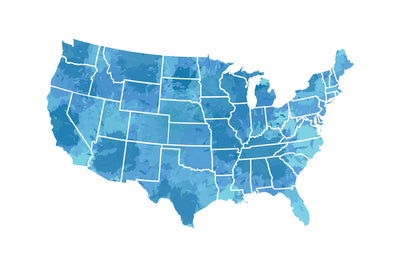PFAS: Everywhere We Look, We Find It
RSS
Analies Dyjak, M.A. | Policy Nerd
Our analysts are finding PFAS everywhere we look. It's such a widespread problem that some state and local governments are beginning to allocate considerable resources to try and mitigate exposure. If PFAS data aren't available for your city, it probably means no one has tested for it yet! We wanted to provide information about some of the major PFAS "hot spots" and how to remove it from your drinking water.
***UPDATED 8/21/23 to include latest EPA Data
Where Are PFAS Found?
Public awareness of PFAS in drinking water has been further elevated after a recent report by the Environmental Working Group (EWG) mapped out areas of the country that have been tested. If your locality is not included on the map, it probably means that drinking water in your area has not yet been tested. The EPA has just released their latest water system data which shows at least one of 29 different types of PFAS chemicals that exceed the EPA's latest reporting limits affecting the drinking water of at least 27 Million Americans.
On April 10, 2024, the US EPA has announced drinking water standards to limit exposure to 6 types of PFAS chemicals. According to the CDC and NIH, PFAS have been linked to various health effects, including cancer. PFAS have become such a big problem in drinking water due to years of mismanaging chemical and industrial waste.
What Are PFAS?
PFAS are a category of man-made contaminants that are commonly used in firefighting foam, Teflon, non-stick surfaces, stain-resistant surfaces, and food packaging. Some health agencies believe that there are over 9000 different variations present in the environment. CDC has linked exposure to PFAS with an increased risk of cancer, increased cholesterol levels, a weakened immune system, and hormonal disruptions. Even small amounts of PFAS are extremely toxic. PFAS are measured in parts per trillion, and one part per trillion is equivalent to one drop of water in 20 olympic-sized swimming pools.
What Are Cities and Towns Doing To Protect Residents From PFAS?
For the first time, the US EPA has announced drinking water standards to limit exposure to 6 types of PFAS chemicals, and are regulated under EPA’s National Primary Drinking Water Standards (NPDWS). Prior to this, many state governments worked proactively to create their own standards as quickly as possible. To see if your state regulates PFAS, check out our article about which states currently have PFAS regulations, and which ones are enforceable or non-enforceable at the state level.
Do All Water Filters Remove PFAS?
The short answer is no. PFAS are much more difficult to remove than most regulated contaminants. A recent study by Duke University and NC State tested a variety of different water filters and their ability to remove PFAS. Hydroviv performed better than brands like Brita, Pur, Whirlpool, Samsung, and Berkey. Hydroviv filters are specifically optimized to get rid of “difficult-to-remove” contaminants that can be found in your drinking water. You can find a summary of the report here!
Other Articles We Think You Might Enjoy:How Did Hydroviv Water Filters Perform in a Duke University PFAS Study?
What Are Per and Polyfluoroalkyl Substances (PFAS)?
Military Bases Have High Levels Of PFAS
Which States Regulate PFAS?


